- Home
- Trevor Hoyle
The Gods Look Down Page 4
The Gods Look Down Read online
Page 4
*
Milton Blake’s handsome black face shone like a happy deed in an apathetic world. Though nearly six feet tall he was shorter by a head than Queghan, and he greeted the lean, pale, angular-shouldered mythographer with a smile that seemed to light up the room. He wore a crisp white lab coat which looked as though it had been tailored to fit him. Queghan detected something but couldn’t say what; his senses were altered.
The Psychic Conservation Unit – PSYCON – was the medical experimental department of the Faculty of MetaPsychical Research. Queghan had paid a visit in the early string-and-sealing-wax days before the department had struggled off its knees and he was now unprepared for the softly-lit corridors and thick carpets and the rows of bronze-coloured doors neatly numbered and tabulated with the appropriate laboratory title. Queghan had a fantasy about doors in a row: he always imagined them leading to one central room, though it was still vitally important which door you entered through. He said as they shook hands:
‘You’ve been robbing the coffers. No wonder MyTT can’t extend its cyberthetic terminal, Milton, you’ve got all the loot.’
Milton Blake laughed and gave him a look. ‘You can’t complain. That TFC Lab of yours must have cost millions.’
‘Not to mention our Psycho-Med facility.’
‘I wish you hadn’t mentioned that.’
‘Sorry.’
Blake was about to sit at the desk and changed his mind. He went across to the windows and operated the tint control so that they darkened a fraction. ‘Would you like some refreshment?’
‘If you’re still making coffee in a Jensen flask, no thanks.’
‘Automatic,’ Blake said proudly, and swept his large black hand to indicate a panel of buttons.
‘Jesus wept.’
‘No, just tea, coffee, fruit juice or iced milk.’
Queghan sat down, forming the chair to his shape, but even ergonomic chairs weren’t designed to accommodate his excessive height and he had to make do without a head-rest.
‘You may marvel at our new facilities, our gleaming toilets and sophisticated refreshment devices,’ Blake said. ‘But wait till you see our Neuron Processor,’ and added significantly, ‘Third generation.’
‘You mean it isn’t still stuck together with chewing gum?’ Queghan said mildly.
‘NELLIE has come of age, my friend. In fact she’s given birth.’ He rubbed his hands like a miser gloating over a pile of pennies. ‘Now we have three-dimensional audio-visual display linked cyberthetically to a data processing facility – we can get the complete neurological landscape on tape including EEG trace, bio-rhythms, the whole works.’
‘You were recording the brain patterns of psychologically disturbed patients the last time I was here; is that still the main line of research?’
Blake waved his hands about. ‘In terms of medical research that still applies.’ He sounded rather unsure. ‘The direction is changing, or maybe it’s more a shift in emphasis. I’ve got a team working on psychiatric case studies but as for me personally, well …’
‘Dagon?’
Milton Blake clasped his strong hands together on the crown of his knee. ‘Have you heard of him? Know of his work?’
‘Somehow I feel that I have but I can’t think in what connection. Biologist?’ he said tentatively.
‘Molecular biologist. He’s done some important work on plasmids – the small linking pieces in the DNA chain used in cloning techniques. But he also has something of a reputation as a classical linguist and interpreter of medieval texts, especially those from the Middle East on Old Earth.’
Queghan smiled. ‘I do my best to keep up but medieval texts are a bit off the beaten path. How does a classical linguist come to be involved in MetaPsychical Research?’
‘The connection is more direct than you might think. About six months ago when the third generation Processor came on-stream, the Neurological Review ran a feature about our new capability and Dagon saw it and got in touch. I must admit that the idea of helping a linguist decipher ancient texts hadn’t occurred to me as the most obvious of applications, but Dagon pointed out that if we could transfer the printed symbols to tape – as electromagnetic pulses – and feed the tape through the Processor we might conceivably come up with some interesting sound and vision.’
‘Treating the pulses as brain patterns?’ Queghan said, making sure he understood.
‘That’s what he had in mind. They’re nothing like as complex as brain patterns, of course, but the Processor might have interpreted them in a new way. Thrown fresh light on their meaning.’
‘And did it?’
‘No.’ Blake mocked his chagrin with a wry smile. ‘What we got was a visual snowstorm and a soundtrack of Krakatoa blowing its top. We ran a series of three and each time there was a screenful of audio-visual static and not much else.’
Queghan suggested that perhaps the static was meaningful.
‘We thought of that. We slowed it down, ran it backwards, turned it on its head but there was no pattern – none that we could detect. I even had it cyberthetically processed.’
‘And what did Cyb make of it?’
‘It gave him hiccups,’ Milton Blake said. ‘You think I’m joking. Took us the best part of a week to straighten him out. It was like an attack of electronic indigestion.’
‘So what happened then?’
Blake held up his hands; the palms were pink and fleshy as though the colour had rubbed off. ‘Dr Dagon isn’t one for giving in,’ he said, almost as if apologizing for a relative with sloppy eating habits. Again Queghan detected an indefinable tension in the atmosphere, like static electricity. ‘He suggested that because the Processor is designed to accept brain patterns we should use a human interface to feed in the data, a kind of cerebral go-between. I agreed. I said it was worth a try, but how were we to achieve it? Well, as a molecular biologist Dagon is pretty well up on current psycho-medical practice and he suggested that we select a patient and try one of the hallucinogenics, possibly 4-methyl-2, 5-dimethoxyamphetamine.’
Queghan said. ‘I don’t like the sound of this.’ His eyes were so pale that they seemed to be without pigmentation. ‘You’re talking about STP.’
Blake looked uncomfortable. ‘To be honest, Chris, I wasn’t whistling on my way to work either. But Dagon is … well he’s a persuasive man.’
‘A few drops of STP on a sugar cube can be lethal.’
‘Don’t you think I know that? The drug acts on the autonomic and central nervous system. It’s used to mimic certain psychoses and induce hallucinations. Dagon felt that if we could inject a strictly controlled amount into a patient and then by deep hypnosis feed in the data we might be in a position to—’
‘Blow every circuit in his brain.’
‘Listen, Chris. Just listen.’ Blake shifted awkwardly even though the ergonomic chair was perfectly contoured to his posture. ‘Dagon felt – all right, we both felt – that if the patient could act as a data bank then the Processor would pick up the information directly from his brain patterns and transfer it to audio-visual display.’
Queghan tapped the arm of the chair with his long pale fingers. They gave the illusion of being almost transparent. ‘Why didn’t you think of trying one of the psychoanaleptics, Amitripyline or Nortripyline? They stimulate the central nervous system in much the same way but they’re not half as risky.’
‘Not powerful enough. We had to depress his normal psychomotor activity and substitute the symbols from the tape. Do you understand – we were giving him a complete new memory.’
‘So you wiped out his past. And what about afterwards?’
Milton Blake cleared his throat. ‘Afterwards?’
‘After the transfer of data had taken place. You didn’t intend leaving the poor sod with a brainful of runic squiggles he couldn’t make head nor tail of.’
Blake sighed gently. ‘We were going to erase the data from his mind and he’d be back where he started from, none the worse. An
120 mg shot of Oxypertine would have fixed it.’
Queghan said nothing.
‘The experiment was a partial success,’ Blake said, avoiding the mythographer’s eye. ‘We transferred the data to the patient’s brain without any complications and then wheeled him into Transmission and linked him to the Neuron Processor. We did have to stabilize the brain patterns, which were somewhat haphazard.’
‘You surprise me.’
‘We put him in trance and almost at once NELLIE began to relay neurological information to the three-dimensional display. The patient’s REM activity was high, so we knew he was responding. The first transmission only lasted half-an-hour because we didn’t want to overload the system.’
‘Or the patient.’
‘Or the patient,’ Blake said with dry emphasis.
‘But you did get something on the display?’
‘The pictures were confused — I’ll show you the tapes afterwards – sometimes several images juxtaposed or overlaid on each other, but they were there all right. Dagon was out of this world; you’d have thought he’d just solved the Unified Field equations.’
Queghan waited. ‘Well, don’t be bashful, what did they show?’
‘It is intriguing, isn’t it?’ Milton Blake had relaxed slightly and now he smiled, his face dark and handsome above the immaculate white coat. He said, ‘I never thought I’d become engrossed in some ancient screed scratched on pig’s bladder, dating from medieval Old Earth several thousand years Pre-Colonization.’ He leaned forward and the chair readjusted itself, altering its centre of gravity. ‘We classified the images into two main groups: those which dealt with the 13th century when the Sepher-ha-Zohar was first transcribed.’
‘That was the original reference source.’
‘Right. It translates as The Book of Splendours. It’s a compilation of traditional oral knowledge handed down through the generations. The second category consisted of images dating from about 1000 BC up until the time of Christ. Naturally there were large gaps, the accounts were fragmentary, but they did seem to form a coherent picture of the two ages.’
‘What was the connection between them?’ Queghan asked.
‘That’s where we encountered problems. Dagon knows far more about this than I do but I think even he’s baffled as to why we should receive information linking two periods of history separated by over two thousand years. There doesn’t seem to be a connection – at least none that’s immediately apparent.’ He regarded Queghan solemnly though with a hint of amused inquiry. ‘That’s what made me think of getting in touch with you.’ He pursed his lips. ‘If somehow we could combine mythic projection and the Neuron Processor …’
‘What makes you think the images will be any more comprehensible than they already are?’
‘I told you that the experiment had been a partial success. The reason is that the human interface is imperfect: because we had to use STP to increase the patient’s receptiveness to input of data, it also meant that the brain wasn’t responding – neurologically – as it ought to. That’s what I meant when I said the brain patterns were haphazard. STP allowed the experiment to go ahead but in the end it presented an obstacle to transmission of information. A chicken-and-egg situation.’
‘And you reckon that my brain would make a more efficient interface,’ said Queghan, his face composed, betraying no sense of irony. His whole aspect was austere, almost ghostly. He didn’t seem to be of this world.
‘Without the use of STP of course.’
‘That’s nice to know.’ He tapped his fingers for a moment.
‘Well?’
‘When do I get to meet the mysterious Dr Dagon?’
Blake was surprised. ‘Does he sound mysterious?’
‘Enigmatic.’
‘That’s nearer the mark. His physical condition is … well, strange. At the moment he’s transferring some of the text to tape, which is a bit of a chore. You should meet him tomorrow, all being well.’
‘This was supposed to be a vacation.’
‘That isn’t going to fool anybody, Chris, least of all me.’ He smiled suddenly, an engaging smile that lit up his face. ‘My cryptic note did the trick.’
‘I did mean to ask you about that. Alchemy in the 13th century I can accept, but nuclear physics? Do the texts actually mention such advanced scientific concepts? They might have theorized about the constituents of matter in those times – as the Greeks and the Arabs did – but they can’t have progressed beyond blind guesswork; they didn’t have the technology.’
Milton Blake conceded this and then went on to say, ‘It’s a question of interpretation. The texts do indicate certain things which can’t be explained within the historical context. The Sepher-ha-Zohar I mentioned before was written by a scholar and alchemist, Dagon ben Shem Tov, who claimed—’
Queghan said, ‘The namesake of Dr Francis Dagon? That’s a meaningful coincidence if ever I heard one.’
‘Not really. That’s one of the things which led him to investigate the texts in the first place. He was researching the Aramaic scriptures which make up the Kabbalah and he came across the name of the Spanish Jew, Dagon ben Shem Tov. And he turned out to be the scholar who transcribed The Book of Splendours. But it’s all a question of how you choose to interpret the texts – whether you believe that something described in anthropomorphic terms was a machine or merely the product of the author’s fanciful imagination. I admit to having doubts but you’ll have to talk to Dagon to get the full story.’
‘I can hardly wait.’
Blake shook his head and said, ‘Though what the hell it all means I don’t know. We might be chasing rainbows – or phantoms.’
‘I don’t think so,’ Queghan said. Then after a moment, ‘How’s the patient coming along?’
‘Which one?’
‘The “cerebral go-between” I think you called him.’
Blake stood up and moved towards the desk. ‘We gave him the shot of Oxypertine but it didn’t have the desired effect.’ He shuffled some papers and then pushed them aside. He looked at the mythographer. ‘You might as well know, Chris. We lost him.’
‘He’s dead?’
‘No, not dead. We had to lock him away. He’s raving mad.’
*
Queghan had always set great store by instinctive emotional response. His senses were finely attuned and he was able to gauge those imperceptibly merging shades of character which make up the spectrum of a unique and individual personality. He knows that Milton Blake was caught in the classic scientific dilemma of trying to reconcile the urge for knowledge with a humane consideration for mankind: the hard scientific drive against the reverence for the human species. It was a dilemma which could not be satisfactorily resolved.
With Dr Francis Dagon the impressions were confused and conflicting: he received a multitude of mental images which didn’t, when one was set alongside another, form a sensible or coherent pattern. It was like seeing somebody’s fractured reflection in a splintered mirror and trying to fit the pieces into a cohesive structure. The fact was that they didn’t and wouldn’t conform, and Queghan was disconcerted – for he prided himself on the acuity of his sense-perception and was dismayed when it let him down.
Blake had warned that he should prepare himself for the physically disturbing but he hadn’t expected to be faced with something that was semi-human. The first shock came when he discovered that Dagon was strapped into a parachair which contained a life-support system; that’s to say his upper half was thus confined, for there was nothing at all below the pelvic bone. He was, quite literally, a half-man. The life-support module in the base of the chair, connected via tubes to his lower trunk, took care of the major organic and circulatory functions, removing impurities from the bloodstream and providing sufficient oxygen to maintain cellular regeneration. In his chest, Quegan later learnt, there was a prosthetic respiratory implant which enabled him – technically speaking – to ‘breathe’, though the actual purpose of this was to sup
ply air to the electrosynthetic larynx which reproduced patterns of sound. As a result his speaking voice was soft and sibilant, full of sighing pauses as the airstream activated the membranes of the larynx.
He was also a blind man who could see. His eyes were ceramic spheres containing solid-state light sensing arrays connected to microcircuits implanted between the two brain hemispheres at the rear of the cranium. These stimulated the visual cortex and produced tiny flashes of light, called phosphenes, which built up a pattern to be interpreted by the brain, in much the same way as an eye scanning a display screen. Dr Francis Dagon was a miracle of highly sophisticated surgical prosthesis techniques; Queghan had seen nothing, not even in the experimental lab, to compare him with.
Towards the evening of his second day at PSYCON Queghan was taken to meet the classical linguist and molecular biologist – in itself an odd combination of academic and scientific pursuits. Blake had set aside a small room in which Dagon could work undisturbed and as they went in he proffered a hand which felt as smooth and boneless as a thermoplastic shell. He didn’t greet the mythographer but said immediately in his sighing voice, ‘Myth Technology isn’t my field but Blake assures me that you can be of service to the project. You understand what we’re trying to achieve.’
This seemed neither a question nor a statement and Queghan didn’t feel obliged to respond; neither was he happy at being regarded as a necessary if minor adjunct to the neuron processing experiment. He got the impression that Dagon would have liked nothing better than to have plugged him into the system and forgotten his existence.
Blake said jovially, ‘Chris knows the broad outlines but I’ve left the details to you. In any case I’m not sure I fully understand the significant differences between Aramaic and Hebrew sematology. Perhaps you could explain.’
‘Will that be necessary?’ Dagon’s head came up, the flesh smooth and hairless under the cone of light from the desk lamp. The corners of the room were in shadow: large heavy volumes slumbered on metal racks and a diamond-shaped grid held rolled parchments like dusty bottles of wine.

 Vail
Vail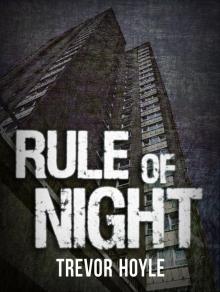 Rule of Night
Rule of Night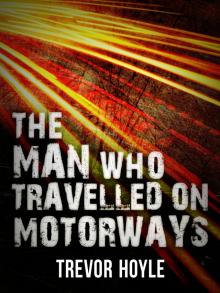 The Man Who Travelled on Motorways
The Man Who Travelled on Motorways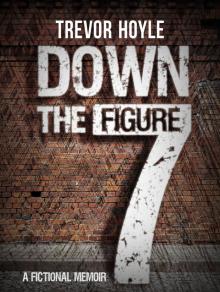 Down the Figure 7
Down the Figure 7 The Gods Look Down
The Gods Look Down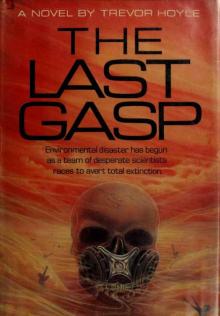 Last Gasp
Last Gasp Mirrorman
Mirrorman Seeking the Mythical Future
Seeking the Mythical Future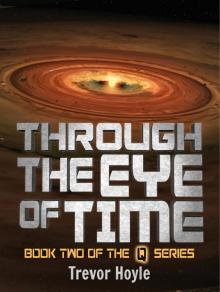 Through the Eye of Time
Through the Eye of Time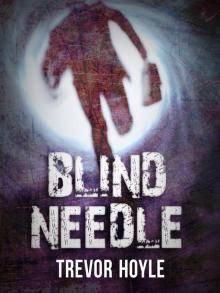 Blind Needle
Blind Needle Earth Cult
Earth Cult